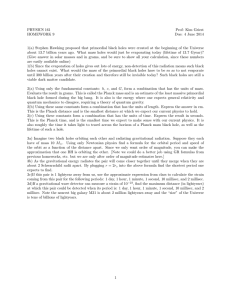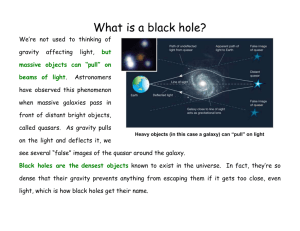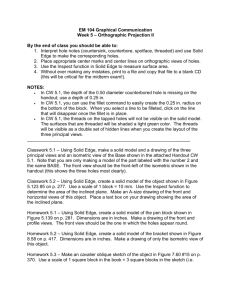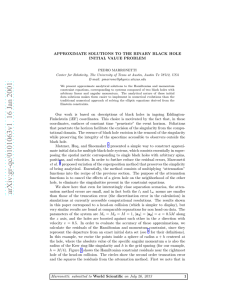black_holes
advertisement
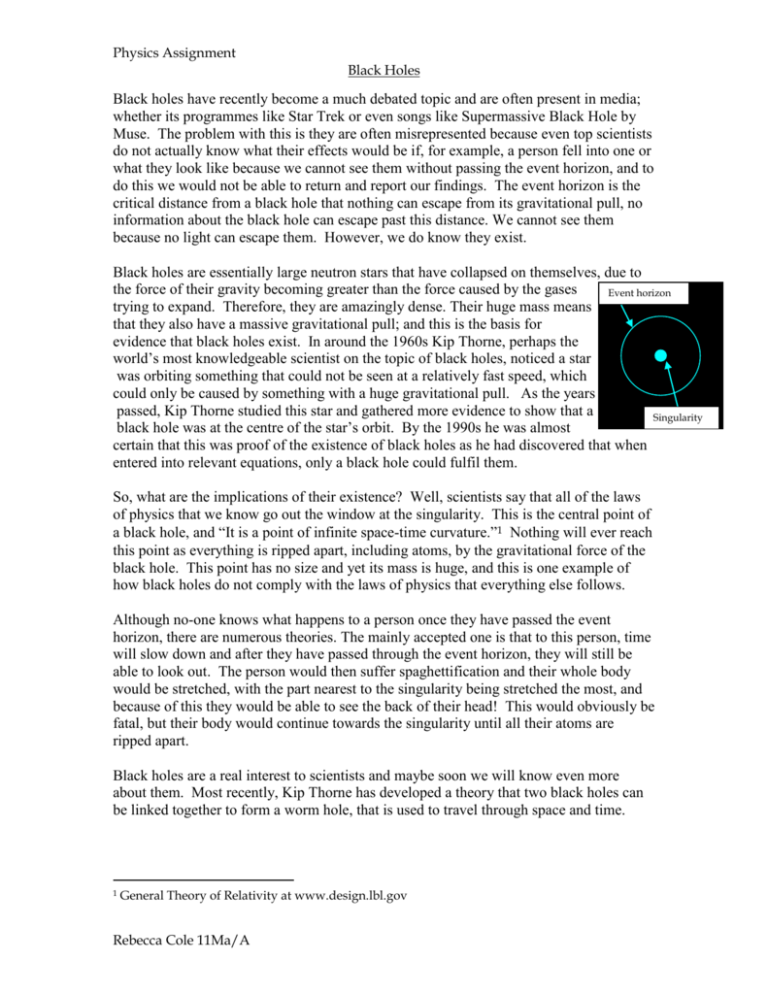
Physics Assignment Black Holes Black holes have recently become a much debated topic and are often present in media; whether its programmes like Star Trek or even songs like Supermassive Black Hole by Muse. The problem with this is they are often misrepresented because even top scientists do not actually know what their effects would be if, for example, a person fell into one or what they look like because we cannot see them without passing the event horizon, and to do this we would not be able to return and report our findings. The event horizon is the critical distance from a black hole that nothing can escape from its gravitational pull, no information about the black hole can escape past this distance. We cannot see them because no light can escape them. However, we do know they exist. Black holes are essentially large neutron stars that have collapsed on themselves, due to the force of their gravity becoming greater than the force caused by the gases Event horizon trying to expand. Therefore, they are amazingly dense. Their huge mass means that they also have a massive gravitational pull; and this is the basis for evidence that black holes exist. In around the 1960s Kip Thorne, perhaps the world’s most knowledgeable scientist on the topic of black holes, noticed a star was orbiting something that could not be seen at a relatively fast speed, which could only be caused by something with a huge gravitational pull. As the years passed, Kip Thorne studied this star and gathered more evidence to show that a Singularity black hole was at the centre of the star’s orbit. By the 1990s he was almost certain that this was proof of the existence of black holes as he had discovered that when entered into relevant equations, only a black hole could fulfil them. So, what are the implications of their existence? Well, scientists say that all of the laws of physics that we know go out the window at the singularity. This is the central point of a black hole, and “It is a point of infinite space-time curvature.”1 Nothing will ever reach this point as everything is ripped apart, including atoms, by the gravitational force of the black hole. This point has no size and yet its mass is huge, and this is one example of how black holes do not comply with the laws of physics that everything else follows. Although no-one knows what happens to a person once they have passed the event horizon, there are numerous theories. The mainly accepted one is that to this person, time will slow down and after they have passed through the event horizon, they will still be able to look out. The person would then suffer spaghettification and their whole body would be stretched, with the part nearest to the singularity being stretched the most, and because of this they would be able to see the back of their head! This would obviously be fatal, but their body would continue towards the singularity until all their atoms are ripped apart. Black holes are a real interest to scientists and maybe soon we will know even more about them. Most recently, Kip Thorne has developed a theory that two black holes can be linked together to form a worm hole, that is used to travel through space and time. 1 General Theory of Relativity at www.design.lbl.gov Rebecca Cole 11Ma/A




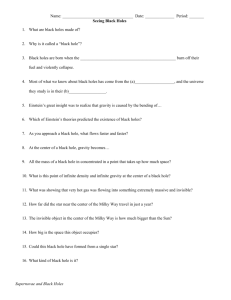
![BLACK HOLES [Image by A. Hamilton]](http://s2.studylib.net/store/data/011136746_1-55ad6d8c7967ea2fec5195cf1d23ce69-300x300.png)
